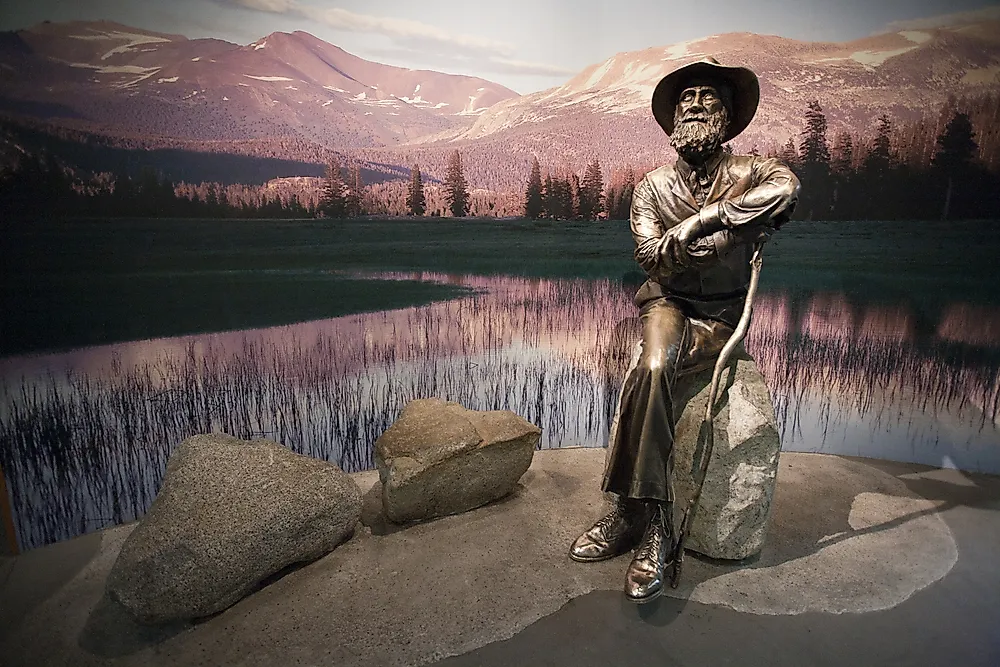John Muir – Father of the Preservationist Movement

John Muir was born on April 21, 1838, in Durbar, East Lothian, Scotland. As a child, he was raised up under a strictly religious upbringing. His family immigrated the the U.S. in 1849, when he was 11. They settled on a farm near Portage, Wisconsin, and the family joined the Campbellite Restoration Movement, today known as the Disciples of Christ. In his youth, John was immersed in religious studies and he remained a spiritual man. He enrolled at the University of Wisconsin-Madison when he was 22, taking a wide range of elective courses. He seemed to never want to pursue a degree, but rather was interested solely in learning for its own sake. He took many botany and geology classes, though he never graduated before he left school in 1863.
4. Career
Starting in 1866, Muir worked at a wagon wheel factory. After an accident damaged his eye, he was confined to a dark room for six weeks. A year later, Muir decided that he was going to follow his dreams of exploring the natural world. His journey began in September of 1867, when he walked 1,000 miles from Indiana to Florida. This journey was later recorded in his book, A Thousand-Mile Walk to the Gulf. After that experience, Muir set out on a series of explorations and journeys. Among them, at one time or another he sailed to Cuba, settled in California, and explored the Yosemite, as well as travelling to Alaska and the Pacific Northwest several times. He did extensive geological and botanical studies throughout the course of his explorations. Over time, he also became a respected writer and a conservation activist.
3. Major Contributions
Muir made major advancement in terms of promoting the preservation of nature. During his explorations in Yosemite and the Sierra Mountains, he discovered that the introduction of domesticated livestock posed a huge threat to these areas. In light of this, he published two papers, The Treasure of the Yosemite and Features of the Proposed National Park, which helped convince the U.S. Congress to build a National Park at Yosemite in 1890. Muir, along with some of his friends, also founded the Sierra Club to discuss preservation issues, and they were especially concerned with natural forest preservation. Muir played an important role in introducing Federal management to the control of U.S. natural resources. His philosophical reflections on nature also had profound influences in that intellectual milieu throughout the U.S.
2. Challenges
Muir's effort in in preservation did not always go according to his plans. He favored Federal management of national parks and resources instead of state-controlled ones. Nonetheless, the U.S. Congress put Yosemite Valley under state control, much to his dismay. Muir's strong beliefs in centralist conservation were also challenged by other activists, including many of his friends. The most notable case was the one involving Gifford Pinchot, then a national leader in the American conservation movement. Muir believed that nature is spiritual and transcendental, and had its own intrinsic values, and therefore should be preserved for its own sake. Pinchot, who was a professional forester, saw nature differently, as a resource that had to appropriated, used, and managed. The two got into an argument, and Muir ultimately distanced himself from his former friend Pinchot. The movement split into two camps from that point forward. Namely, these were the strictly "preservationist" faction, led by Muir, and the "conservationist" one, led by Pinchot. The momentum of the splintered movement soon slowed as a result.
1. Death and Legacy
Muir died of pneumonia on December 24th, 1914, at California Hospital in Los Angeles. His life exhibited a perfect balance between acting and thinking, and he demonstrated that beliefs can be channeled into concrete actions, and vice versa. He was not only one of the most important activists in the preservationist movement, but also a prolific thinker and writer. He left his country with an inspiration to set aside national parks and national forests, and to work for a better natural environment. He also left behind him profound resources of spiritual and intellectual inspirations, and fundamentally changed the way people see nature and the relation between nature and themselves. His birthday is a commemorative day in California, and more than 20 public places are named after him throughout the U.S. today.











